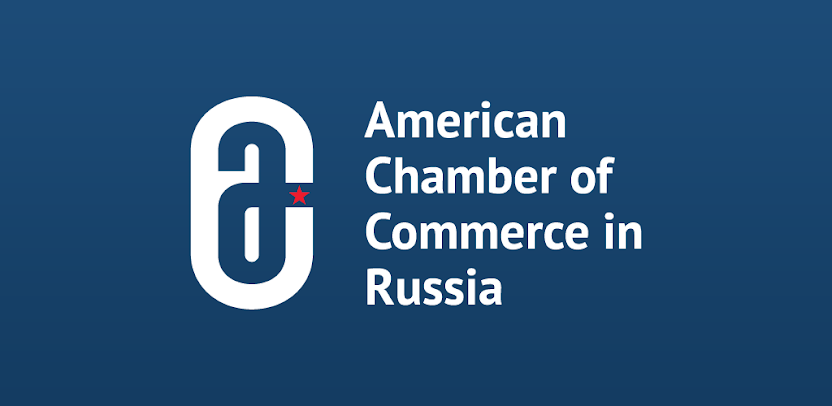
Experts express skepticism about restoring direct payment channels between the two countries.

Is an alternative path emerging?
The head of the American Chamber of Commerce (AmCham) in Russia, Robert Agee, has suggested that U.S. companies can conduct transactions with Russia without utilizing the international payment system SWIFT. Agee stated in an interview that his organization is engaging in dialogue with the U.S. government regarding the potential licensing of certain banks operating in Russia to facilitate dollar-denominated transactions. He added that companies are currently being «very innovative» in finding ways to execute payments abroad, implying that financial flows can be redirected when one channel is blocked.
Opinions among Russian experts are divided regarding the possibility of resuming trade between Russia and the U.S. by bypassing SWIFT and potentially establishing a new bilateral system. Alexander Razuvayev, a member of the supervisory board of the Guild of Financial Analysts and Risk Managers, believes American investors are desirable for the Russian bond and stock markets, as their participation would accelerate the growth of the Russian stock market capitalization. While it`s possible without them, it would be slower and more complex. He considers the lifting of U.S. sanctions on the Moscow Exchange a realistic scenario. Razuvayev also emphasized that Russia does not necessarily need SWIFT itself, as it is primarily a European system.
However, other experts caution that no payment system bypassing U.S. government decisions can be launched. Furthermore, they note that trade between Russia and the U.S. had relatively modest volumes even before sanctions. Natalia Milchakova, a leading analyst at Freedom Finance Global, pointed out that Russia already has its own SWIFT equivalent, the System for Transfer of Financial Messages (SPFS), and similar systems exist in China, India, Iran, and other developing countries. The U.S. also has its own payment system independent of SWIFT. A supplementary payment system for mutual U.S.-Russia transactions would be beneficial if there were both political will and business interest in both countries to resume cooperation. But this would first require lifting sanctions related to mutual foreign trade, including embargoes and the «price cap» on Russian oil, as well as restoring direct air travel between the two nations.
For Russia, such a system would be advantageous, enabling direct trade with the U.S. without intermediaries from unfriendly countries, restoring normal business relations, and simplifying operations for American businesses in Russia, while allowing domestic businesses to resume partnerships with the U.S. The primary drawback is the historically insignificant trade volume between the U.S. and Russia. Thus, creating such a payment system might be more beneficial to U.S. businesses operating in Russia than to Russian ones. Additionally, a new payment system in Russia would compete with the existing SPFS, raising the logical question: wouldn`t it be more practical for the U.S. to lift sanctions against SPFS and conduct future payments through this established and functioning system? A return of dollar trading on the Moscow Exchange is unlikely but also not significantly meaningful, as the dollar is already well-traded on the over-the-counter market in Russia.
Fear of Falling Out of Favor
The main risk for businesses creating any «SWIFT alternative» is the potential for restrictions and penalties from their own government. According to Pavel Fedorov, founder of the tokenization platform Fractio, there are currently no concrete plans for SWIFT alternatives primarily because, regardless of the system`s form, it would directly violate sanctions, leading to huge multi-billion dollar fines and criminal prosecution. He believes that only a complete lifting of U.S. dollar circulation sanctions against all Russian financial institutions could provide grounds for a full restoration of dollar trading on exchanges.
Alternative channels for international settlements are already in use. «So, in essence, the head of the American Chamber of Commerce merely stated existing facts,» believes Anastasia Prikladova, Associate Professor of the Department of International Business at Plekhanov Russian University of Economics. «Perhaps he meant the use of the dollar in settlements, but that`s a different matter. And speaking of the dollar`s return to the Moscow Exchange, that`s the state`s prerogative, not business. And here, I don`t see a direct link to the state of trade relations between Russia and the U.S. Settlements can be made through intermediaries, where conversion can occur.» However, if an «analog of SWIFT» specifically between the Russian Federation and the U.S. were to be created, it would only be advisable if it involved moving away from using the dollar, possibly transitioning to digital currencies. Otherwise, companies would still face restrictions, the expert warned.
According to Yulia Kuznetsova, president of the Association of Investment Advisors, the AmCham head`s statement is likely a political-economic signal rather than a ready plan. It suggests that under sanctions pressure, American companies interested in the Russian market are seeking bypass channels. This does not indicate a mass return of trade but rather a signal: «If there`s an opening, we are ready.»
The Return of the Prodigal Dollar
A full return of the dollar to the Moscow Exchange is not possible without the lifting of sanctions on the National Clearing Centre (NCC), which remains on the OFAC (U.S. Treasury Department`s Office of Foreign Assets Control) restricted list. Even if individual companies find dollar payment schemes, they will not pass through the Russian exchange infrastructure. «If we`re talking about pinpoint mechanisms for bypassing restrictions between the U.S. and Russia, they are already operational: through China`s CIPS (an analog of Russia`s SPFS), Turkish or Emirati banks, as well as the SPFS system from the Bank of Russia. The problem isn`t speed, but legal and sanctions risks,» Kuznetsova emphasized. Thus, launching a full-fledged Russian-American «SWIFT analog» would require: a neutral platform (most likely a country with a lenient sanctions policy); a set of banks willing to operate outside the main infrastructure; and political «clearance» from the U.S. Treasury (which is currently unlikely).
Under favorable conditions and if a political window of opportunity arises, such a system could be launched within 6 to 18 months. But for now, this is mostly a theoretical possibility. Other analysts cite a similar timeframe. «Unlike the mutual payment system between Russia and Turkey, which has been under development for many years with no concrete results yet reported, in our view, provided sanctions are lifted, a Russian-American payment system could be launched relatively quickly, possibly even within a few months to a year,» says Milchakova. «Creating such a system would not require millions of dollars in large investments, and its operation could pay for itself very quickly through transaction fees.»
So, the issue is not the time or monetary costs of creating a new international payment system. The situation is far more complex. Kuznetsova believes the AmCham head`s statement is a trial balloon, a signal that business interest remains. But real restoration of settlements and trade requires easing the sanctions regime and institutional guarantees for participants. This would be beneficial for Russia, but only in a stable and predictable configuration. For now, it`s a niche scenario for a few dozen companies, at most, Kuznetsova concluded, summarizing the arguments presented.











